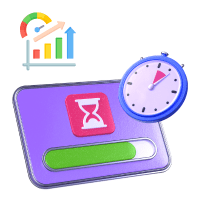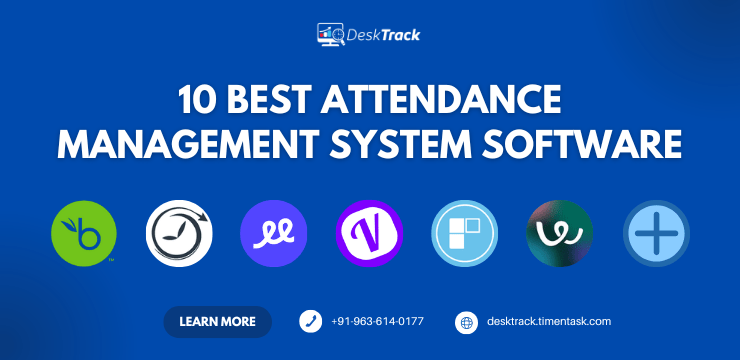
The Art of Remote Team Leadership! Delve into our top 10 expert-curated tips to navigate the dynamic landscape of managing remote teams seamlessly, fostering collaboration, and cultivating a thriving virtual work culture.
Facts About Remote Team Management
66% of workers operate from home at least part of the time, according to recent Robert Half research. Even after the pandemic is officially over, they want to work remotely three days per week on average.
Our company also conducted a separate survey and found that 74% of organizations allow employees to work from home.
Companies like Aha, NationBuilder, and Automatic Buffer are some companies successfully working as 100% remote companies. However, still, many companies are going through dilemmas to successfully run around as remote working companies.
The Challenge to Manage Remote Team
If you have long-distance relationships with your employees, how do you manage them? Relationships with long-distance remote employees are difficult, mainly because we expect that distance won’t affect our relationship at all. Whether it’s remote work monitoring or personal relationships, this is true. In today’s technological age, where information and resources are accessible everywhere, face-to-face working is less popular.
Today’s businesses are adopting remote work trends and bringing in top talent from abroad. And a manager’s duty is to oversee remote employees. It’s your responsibility as the manager of a remote team to develop, mentor, and assist team members, which is a challenge in and of itself. This manual is intended to assist supervisors in managing their remote lifestyles and improving employee satisfaction.
Here are some remote team management tips if you are constantly pondering “How to Manage Remote Teams” and are looking for some ideas about how teams have successfully managed themselves remotely.
Advantage of Remote Team Works
Discover the advantages of Remote Teamwork. The Your Future Is Flexible report emphasizes the benefits that organizations can derive from the long-term adoption of flexible work and looks at the success that Robert Half has experienced in doing so. The data can also assist other businesses in setting up the conditions necessary for employees to successfully engage in remote, in-office, and hybrid work arrangements. You’ll learn:
Information about how Robert Half’s commitment to flexible work is paying off, as well as what our staff have to say about it study on the hazards of reducing job flexibility Questions that businesses should think about as they adopt flexible work schedules for their team’s advantages of working “face-to-face with a purpose”
download Robert Half’s Your Future Is Flexible study. Download
Tips for Managing Remote Teams
Managing a remote team can present unique challenges compared to managing an in-person team. Here are some tips to help you successfully manage a remote team:
Set Expectations
One of the best remote team management ideas is set expectations for both side employees and managers. In times when managing remote teams has become a cakewalk, setting expectations is one of the processes involved in workforce engagement management. Be it virtual work hours scheduling or project schedule, let your team know how they can manage it all from afar.
Also, you can set expectations through a single mass call and one-on-one calls in case any nuanced expectations are left to be discussed.
Additionally, setting expectations should be more realistic and inclusive type and less unrealistic type which can only lead to your and your team’s failure.
Conducting one-on-one Check-ins
Give your team this confidence that every team member can reach out to you on a one-on-one basis whenever needed.
Also, let your team know that they can discuss issues that they feel uncomfortable discussing in the group call. Engagement of your remote employee to work with each other is part of remote employee monitoring.
Show Empathy Gesture
Get frequent updates on the well-being of your employees besides work-related updates. This gives them the feeling of being valued and important from the employees’ point of view.
You can ask your employees how they can handle disruptions at home and what tips they would like to pass on to their colleagues who are working from home.
Extend Flexibility
Be flexible to let your team work in a variable schedule, whether they prefer to start their work early or late as such flexibilities in work refresh mind time and again.
Also, whether it is about taking a walk to some park or visiting a nearby grocery store, believe that your team deserves such flexibility in breaks ensuring that you are always known about their whereabouts.
Avail Resources
Ensure the availability of all the required resources for your team, be it project timelines, background documents, dropbox, Google Docs, etc.
Besides, ensuring your team accesses Google Calendar is again a great option to let them know any latest details in the schedule.
Be Friends with Tech Tools
It would sound difficult to digest that you can easily manage your remote workforce without exploring new tech tools that can simplify your daily operations.
It would be a great idea to discuss with your team time and again how they are managing to simplify their daily operations with the help of technology tools and what measures they take when troubleshooting needs to be done.
Setting Boundaries with Remote Workers
It is very important to outline personal and professional life, therefore you should ensure well to not mix your employee’s professional life with personal life. Besides, when your teammates are working from different time zones, then there is a high chance that your message or notification can ruin their sleep or family time.
Respecting your team members’ time and space shows them that you care for them. Such gestures help in building positive relationships with employees which ultimately helps in enhancing employee engagement.
Learn more about employee engagement – How to measure employee engagement in the workplace?
Encourage and Embrace Diversity
It is a very usual scenario to come across cultural obstacles while managing remote teams.
Multicultural teams often experience misunderstandings and conflicts that lead to divisions within the teams. Managing people from different races, embracing cultural diversity, and team building is pretty challenging.
Since people from different areas tend to give different feedback as per their observations and perception, however, such differences in mindsets should be promoted to enhance team building, hence managing your remote teammates.
Besides, national holidays for your global team should be granted, hence respecting every cultural difference.
Learn More About Your Team
Learn more than your team’s work skills to manage a remote team. Though, it becomes comparatively easier to know a person who is sitting the whole day beside you than the one working remotely.
You start knowing your in-house teammate in and out, his strengths and weaknesses, and what personality he possesses.
When working remotely, you must, nevertheless, put some effort into getting to know your team. Make it a point to engage them in conversation so
you can learn a lot about their character.
This will enhance the positive culture within your remote team.
Additionally, as the market is going global, so should your team, and when you have to manage your remote team, make sure you know their pulse.
Mentors Manage Less
The best management means mentoring and coaching more than typically “managing.” your remote team.
Though it requires outside help, new initiatives, and making the time. So, get on it ASAP.
Each of the tips above falls into the category of simplicity though not easy.
They each require time, attention, and consistency. But trust me, your team will be obliged to you. The organization will be benefitted.
Conclusion
Managing remote teams successfully demands a blend of trust, communication, and adaptability. These top 10 tips encapsulate the essence of fostering cohesion and productivity in a dispersed work environment, bridging distances to create a seamless and empowered team dynamic








